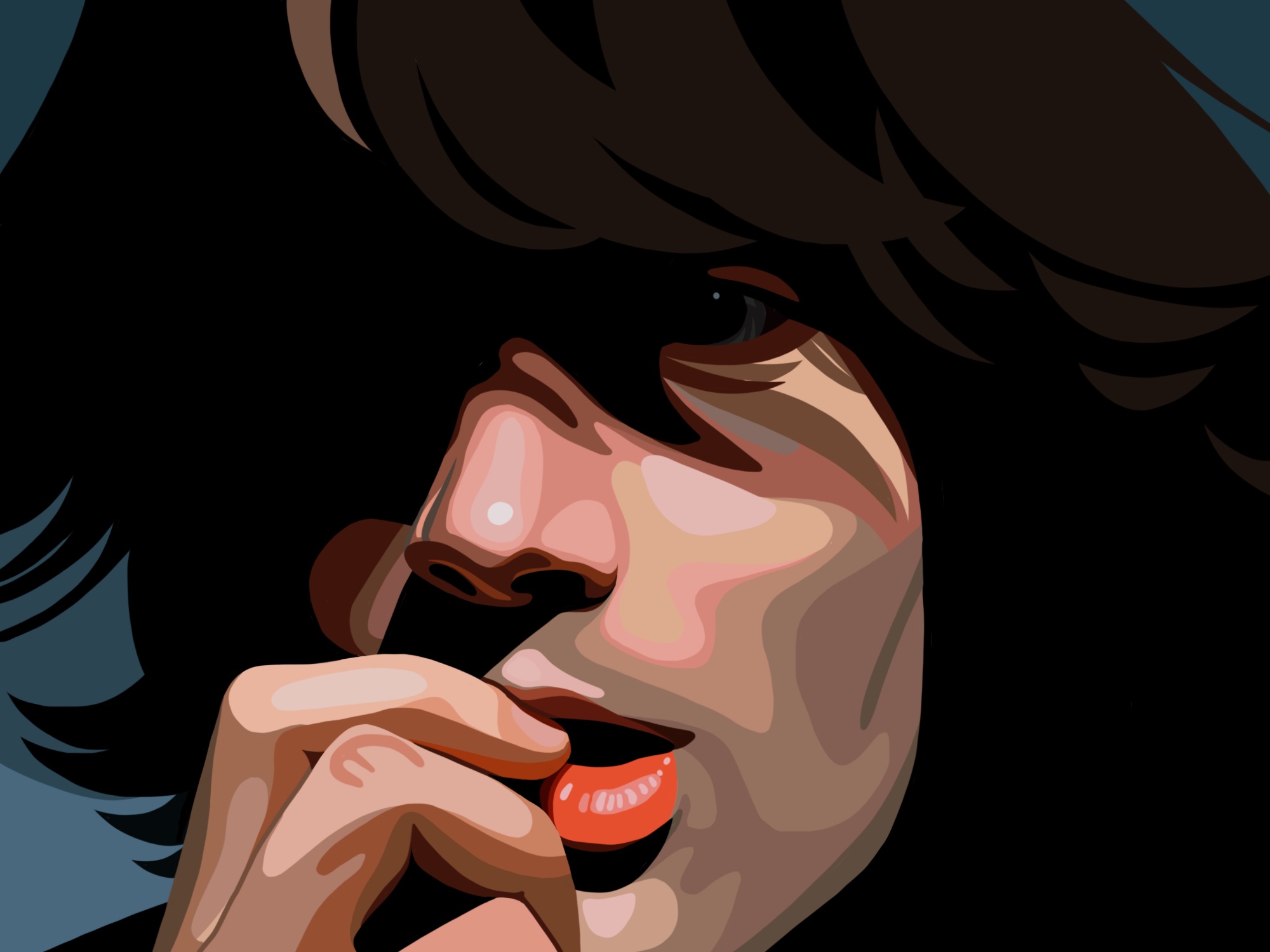Hearing my bloody valentine’s “Loveless” for the first time was life-changing. The crushing and viscerally disorienting guitar tones along with the dreamy vocals changed my perception of what rock music could be. Cuts like “Sometimes” and “When You Sleep” still resonate with me, both as equally riveting and evocative as when I first listened at 15 years old.

My bloody valentine and “Loveless” are both popularly regarded as the quintessential album and band that defined the “shoegaze” sound, and it is intriguing how much the genre has evolved after its release.
Shoegaze has become almost unavoidable to Gen-Z listeners. From TikToks nearing approximately 180,000 posts under the hashtag “shoegaze” to a new generation of rising shoegaze bands, the genre has found new life. However, it wasn’t this way in the beginning, especially to a more general American audience.
Emerging in the United Kingdom in the late 1980s, shoegaze was Britain’s answer to America’s emerging grunge craze. The name “shoegaze” is a reference to the motionless act of guitarists looking down at multiple guitar pedals, or more commonly, their shoes. Obtaining the classic “shoegaze” sound requires the use of effect pedals to capture its spiraling complexity.
I consider bands such as my bloody valentine, Ride and Slowdive to be the forefathers of this immersive, effect-heavy and promising beginning for the genre throughout the early 90s with my bloody valentine’s “Loveless,” Ride’s “Nowhere,” and Slowdive’s “Souvlaki” considered to be the foundations of the genre.
To me, The Washington D.C. indie rock band, Lilys, are one of the first real American shoegaze bands to spark outside of the United Kingdom. Forming the band in 1988, frontman Kurt Heasley was directly influenced by my bloody valentine. I think that their infusion of the sonic sounds of shoegaze and cut-and-dry indie rock are evident, especially on their 1992 debut album “In The Presence of Nothing.”
During the same time period, more American shoegaze bands began cropping up, many of which were formed by young college students. Swirlies and Drop Nineteens are a prime example of this, bands that fully embodied the term “college rock.” Both Swirlies and Drop Nineteens formed in the Boston area, members of Swirlies attending the Massachusetts Institute of Technology and members of Drop Nineteens attending Boston University.
Forming after the noisy, slacker Massachusetts bands Dinosaur Jr. and Sebadoh, Swirlies and Drop Nineteens emerged in a league of their own. With their unique spins on the British shoegaze sound, both bands carved their own distinct sound.
The off-kilter catharsis and pop-centric melodies of Swirlies contrasted with the more alt-rock sensibilities and edgier grunge-tinge of Drop Nineteens to establish different lights in the genre. With Swirlies 1993 album “Blonder Tongue Audio Baton” and Drop Nineteens 1992 album “Delaware,” the intersection of American college rock and the characteristics of shoegaze expanded the possibilities of what could constitute as shoegaze.
The only problem with American shoegaze during the 90s was its initial appeal and commercial success. Not many listeners championed what was happening in America. The genre’s inception was practically an underground movement that went unnoticed. Majesty Crush and Alison’s Halo are examples of bands that are criminally overlooked in the canon of American shoegaze, only to be rediscovered later on through reissues.
Even with this limiting factor, hopefuls were not discouraged from taking part in the emerging American shoegaze wave. Bands that formed in the middle to late 90s, such as California’s dreamy Starflyer 59 and Texas cult favorites Lift to Experience, have been persistent in further shifting the sound.
Melding hybrids of rock-adjacent subgenres, Starflyer 59 and Lift to Experience heightened the potential for sound experimentation. With Starflyer 59’s fluttering and evocative dream pop escapades and Lift to Experience’s emphasis on the anthemic builds of post-rock, the shoegaze sound still remains in their music — and in high spirit, as explosive as ever.
The 2000s saw American shoegaze move in a more electronic direction, where bubbly synthesizers and more low-fidelity, scrappy production were introduced to the scene. Philadelphia’s noisy and feel-good outfit A Sunny Day in Glasgow, California’s glitch pop-influenced duo Sweet Trip and New York noisemakers A Place to Bury Strangers were no strangers to this decade.
American shoegaze hit its biggest stride in the 2010s — a decade that pushed the genre’s boundaries to more emotional heights. The San Francisco band Deafheaven solidified this with their seminal sophomore album, “Sunbather.” Combining shoegaze, atmospheric black metal and screamo made this album a landmark in the genre. It created bigger-sounding, long-form songs that popularized “blackgaze” to an American audience.
The embrace of softer elements in American shoegaze, such as airy, wispy vocals and poppier instrumentation are prevalent as well. Bands like Nothing, Whirr and Ovlov never gave up the heavy catharsis of their sound, but the emphasis on softer vocals struck a chord with their audiences. Brooklyn dream pop band DIIV trade heaviness for a more jangly, reverb-drenched sound that still contains traces of shoegaze undertones.
In the latter half of the decade, American shoegaze started to flourish, especially in Philadelphia. Blue Smiley, which is highly regarded as the band that defined a pivotal moment in Philly’s indie rock scene, came at a perfect time. The band was short-lived, disbanding after vocalist Brian Nowell’s tragic passing.
Knifeplay, A Country Western and notably They Are Gutting a Body of Water, or TAGABOW, became prominent Philly shoegaze bands that carried the torch after Blue Smiley. They are just as adventurous, kooky and experimental as ever — in particular TAGABOW vocalist Douglas Dulgarian’s hypnotic, digital embrace of the genre.
What was once a blip in the listener’s radar slowly turned into a cultural phenomenon nearing three decades. It’s safe to say that American shoegaze is officially here to stay.

























































































































